Canceled Part 3: A Maximum Letdown Special
by William Talley, filed in Games, Maximum Letdown on May.28, 2012

Today, we celebrate Memorial Day. A day where we commemorate the sacrifices our brave soldiers have made for this country. However, we, as nerds, must also commemorate something else: games that have been canceled and left on the cutting room floor. Bow your heads in silence before reading this article.
Batman: Gotham by Gaslight
 What it Was: Day 1 Studios (Fear 3) was working on a game based on the 1989 Elseworlds tale, Gotham By Gaslight which saw a steampunk version of the caped crusader take on Jack the Ripper in Victorian era version of Gotham. According to recently released concept art and footage, the game would see Batman travel around a foggy Gotham with cape footage similar to the Arkham Asylum games. The Caped Crusader could even take to the rooftops via a high jump.
What it Was: Day 1 Studios (Fear 3) was working on a game based on the 1989 Elseworlds tale, Gotham By Gaslight which saw a steampunk version of the caped crusader take on Jack the Ripper in Victorian era version of Gotham. According to recently released concept art and footage, the game would see Batman travel around a foggy Gotham with cape footage similar to the Arkham Asylum games. The Caped Crusader could even take to the rooftops via a high jump.
What Happened: Day 1 tried to pitch the game to publisher THQ, but it was rejected for unknown reasons, and sometime later we wound up with the awesome Arkham Asylum and Arkham City.
My Thoughts: Maybe it was for the better, after all, before this game, we were stuck with some pretty absymal games, so maybe it would have been a good idea to create an experience based on the core Batman mythologies. Then again, this had some potential, and it seems like the assets and art direction could live on as Arkham City DLC.
Untitled Avengers Game Published by THQ
 What it Was: A tie in to this summer’s Avengers movie. According to footage that was leaked late last year, players would take control of The Hulk, Iron Man, and others in a first-person view as they battled throughout New York.
What it Was: A tie in to this summer’s Avengers movie. According to footage that was leaked late last year, players would take control of The Hulk, Iron Man, and others in a first-person view as they battled throughout New York.
What Happened: THQ shut the doors of its Australian studio, which developed the MX vs ATV series (in effect the series was also canceled) and Avatar: The Last Airbender in a “strategic realignment of its internal studio development teams” intended to shift the company’s focus away from games based on licensed kids’ properties and movie tie ins. This despite the fact that such titles are always easy money makers for any publisher. Turns out the Avengers game was just one of the titles in development at this studio. Maybe THQ is allergic to comic book based games (see above).
My thoughts: Or maybe THQ is allergic to money. With their current financial problems (and rumors of a Marvel buying them out and renaming them Marvel Interactive), canceling a high profile title like this is the last thing they want to do. Even if the game was a clunker, the name recognition alone would have helped it move some serious units.
Timesplitters 4
 What it Was: The fourth entry in the fan favorite FPS series, and its current generation debut. Little was known about the game, except that it would likely spoof other FPS games and have lots of monkeys.
What it Was: The fourth entry in the fan favorite FPS series, and its current generation debut. Little was known about the game, except that it would likely spoof other FPS games and have lots of monkeys.
What Happened: Since the game was announced back in 2007, series creator Free Radical was purchased by Crytek and was renamed Crytek UK. Info on the game has since went dark as Crytek focused on other titles, namely Crysis 2 and 3. In late 2011, Timesplitters: Future Perfect lead programmer Tristan Reidford stated that TFP didn’t do as well as they hoped, so Timesplitters 4 had been put on the backburner. Last April, a company spokesman confirmed that the titles was ‘not in development’.
My Thoughts: This is a shame, as Timesplitters was one of the most original and creative FPS franchises of last generation. The map editor, level variety, and sheer amount of mutliplayer options (IMHO) would put this game above Halo and Call of Duty in terms of multiplayer action. Hopefully it’s appearance on this list is a bit premature. A Crytek-engine powered Timesplitters 4 would make the top of any FPS fan’s ‘must have’ list.
Marvel 2099: One Nation Under Doom
 What it was: A Playstation action game based upon Marvel’s 2099 Universe, specifically the One Nation Under Doom storyarc. Players would take control of characters like Punisher 2099 and battle the forces of evil. Mindscape, the game’s developer/publisher declared that the game would be one of the company’s top 5 games of 1996.
What it was: A Playstation action game based upon Marvel’s 2099 Universe, specifically the One Nation Under Doom storyarc. Players would take control of characters like Punisher 2099 and battle the forces of evil. Mindscape, the game’s developer/publisher declared that the game would be one of the company’s top 5 games of 1996.
What Happened: Regardless of the fact that the game was demoed at the 1996 E3 and San Diego ComicCon, and VHS and CD-Rom videos of the game were sent to various gaming magazines, the game’s development was put on hold due to the studio having financial difficulties.
My Thoughts: Seems like THQ isn’t the only one who seems to be allergic to comic-book based games. Still, it seems that if done right, this game would be an early Playstation hit.
Star Fox 2
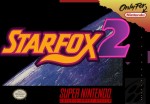 What it Was: A SNES Sequel to one of the most graphically advanced games of the 16-bit era. Powered the the Super FX2-chip, Players would join Fox McCloud and the crew (plus 2 new female characters) as they battled Andross throughout the Lyat system, and control new vehicles. A new non-linear map would have players taking on threats as they come and choosing each mission.
What it Was: A SNES Sequel to one of the most graphically advanced games of the 16-bit era. Powered the the Super FX2-chip, Players would join Fox McCloud and the crew (plus 2 new female characters) as they battled Andross throughout the Lyat system, and control new vehicles. A new non-linear map would have players taking on threats as they come and choosing each mission.
What Happened: Although the game was nearly complete, Nintendo shuttered it to focus on the Nintendo 64.
My Thoughts: What a painful loss. At the time, the SNES needed as may high profile releases to keep it afloat. Although we got Starfox 64, it just doesn’t make up for what could have been. A Super Nintendo version of FX Fighter had also been canceled, making theSNES port of Doom and Yoshi’s Island the only 2 games released that used the Super Fx2.
Chrono Trigger: Crimson Echoes
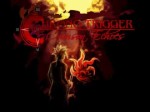 What it Was: A Super Nintendo Rom Hack/sequel to one of the most beloved RPGs of the 16 bit generation. Using the same graphics as the original, this independently developed not-for-profit sequel would pit Chrono and the gang against a returned Lavos, and it would even include plot tie-ins to Chrono Cross.
What it Was: A Super Nintendo Rom Hack/sequel to one of the most beloved RPGs of the 16 bit generation. Using the same graphics as the original, this independently developed not-for-profit sequel would pit Chrono and the gang against a returned Lavos, and it would even include plot tie-ins to Chrono Cross.
What Happened: Developer Kajar Laboratories got hit with a cease and desist letter from Square-Enix, although a playable alpha build is floating around on the internet. Many fans and media outlets, including The Guardian, Cnet, and Wired, expressed their disappointment in the game’s cancellation. A similar project, Chrono Resurrection, which was a remake of the original game was also hit with a cease and desist letter.
My Thoughts: While I can understand Square-Enix wanting to protect its intellectual property, this move comes off as a bit dickish, considering first of all the game wasn’t intended as a commercial release and Square isn’t doing much with the franchise anyhow save for the occasional re-release. A better route would have been for Square to pick up the project, and release it via Xbox Live Arcade, PSN, WiiWare, or Steam. Given the popularity of retro-style releases, including Square’s own Final Fantasy IV: The After Years, it would have been a great way to revive the long dormant franchise.
Shenmue Online
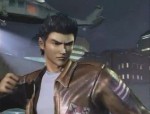 What it Was: An online installment of the cult hit Shenmue developed primarily for the Chinese Market. Players will join one of three clans, taking missions from them. Characters from the series like Ryo and Lan Di will also appear as well. The game’s world was said to be bigger than the console games with over 1200 buildings.
What it Was: An online installment of the cult hit Shenmue developed primarily for the Chinese Market. Players will join one of three clans, taking missions from them. Characters from the series like Ryo and Lan Di will also appear as well. The game’s world was said to be bigger than the console games with over 1200 buildings.
What Happened: JC Entertainment, the Korean company who was co-developing the game with Sega Japan had pulled out of development. This lead to a legal battle as to who owned the rights of the game as JC had developed half of the game’s assets. While its cancellation was never outright confirmed by Sega, reports have appeared on sites such as Wired and Destructoid.
My Thoughts: Maybe Yu Suzuki can get back to working on Shenmue 3! #wishfulthinkingIknow
Sonic X-treme
 What it Was: Sonic’s would be Sega Saturn debut. Players would once again take control of the blue Hedgehog throughout 3D tube-style environments as he battles Dr. Robotnik. The Hedgehog would have several new moves, including a ring toss. Players could also take control of Tails, Knuckles, and a new character, Tiara, each who had their own style of gameplay.
What it Was: Sonic’s would be Sega Saturn debut. Players would once again take control of the blue Hedgehog throughout 3D tube-style environments as he battles Dr. Robotnik. The Hedgehog would have several new moves, including a ring toss. Players could also take control of Tails, Knuckles, and a new character, Tiara, each who had their own style of gameplay.
What Happened: This is where things get complicated. Before we go any further, I should mention the game had a strict release date of December 1996 and Saturn/PC development had begun midway through 1995. Keep this in mind while you read the next three paragraphs. I should also mention that the game was at first intended to be a Genesis game, and then a 32X game before it was to be a Saturn/PC game. It was moved from the Genesis because the system was nearing the end of the it’s life cycle, so it was moved to the Sega 32X and given the name Sonic Mars. The developers considered adding characters from the Saturday morning cartoon and rendering the game in a 2.5d style. However, the graphical engine that the developers wanted to put into the game became too much for the system to handle. Since the 32X wasn’t exactly flying off store shelves anyway, the decision was made to move the game to the Sega Saturn and PC.
On the PC, two separate teams worked on the game. One team, led by Chris Senn and Ofer Alon developed the main game engine, which took place in tubular levels in which Sonic could run on the walls. Another team, led by Chris Coffin developed a free-roaming arena-style engine. A separate engine was used for the boss battles, which incorporated top-down and side-scrolling views while using the prerendered sprites made by Senn’s team. When representatives from Sega of Japan visited the developers, they were unimpressed by outdated footage of the game and left without viewing the latest version. However, they liked the footage shown using the boss engine, and wanted the game to resemble that. This proved to be crushing for both teams, as The Sega of Japan people didn’t view the latest build of Senn’s engine and Coffin’s people now had even more work to do.
Oh, and that boss game engine I mentioned? Yuji Naka made it into another game altogether, a little known title known as Nights: Into Dreams. I’m sure a few of you Sega Fans are familiar with it. Senn’s team and Coffin’s team had to hustle to make the December 1996 deadline, so they ended up working 16-hour days. Since Sega wanted them to make the game in the style of the Night’s engine, they requested it to use as a starting point. Unfortunately, Yuji Naka, the creator of Nights refused to grant permission and even threatened to leave the company if the Sonic game was released using the Nights engine. This, despite the fact that the engine was originally developed with Sonic in mind. So, Senn’s team hammered away on the game using their engine, hoping to get approval from Sega’s PC department. Sadly, it would be turned down once again, and Alon would end up leaving Sega. Coffin came down with an illness leaving him unable to complete the project.
Desperate to have a Sonic game out on the Saturn before the holiday rush and unable to complete the project in time for it’s December 1996 release date, Sega decided to cancel the game altogether and commission UK developer Traveller’s Tales to make a Saturn port of Sonic 3D Blast. By the way, Sonic 3D blast was a Genesis title despite them passing on making Sonic X-treme for the system. With that, the franchise began the long nosedive into mediocrity.
My Thoughts: What could have been the Saturn’s biggest title is instead bought down by Yuji Naka being a dick and company politics. This would eventually end up being one of the many nails in the coffin of the Sega Saturn, and the Dreamcast wouldn’t fare much better. Say what you will about Microsoft, but the Xbox brand is nearly 11 years old and the company is still going strong as a console manufacturer.
Sadness
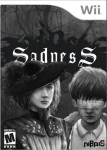 What it Was: A Wii survival horror title taking place in pre-World War 1 Eastern Europe. Players take control of Maria Lengyel, a Victorian era aristocrat who son had been struck blind in a train accident. She would have to guide him to safety as he is exhibiting increasingly strange behavior. The game would feature themes based on Slavic Mythology and deal with subjects such as narcolepsy and nyctophobia. The game would make use of the Wii’s motion sensing capabilities. For instance, players would wield the wiimote like a torch to scare off rats and pick up items by reaching out with the controller. The game would contain a branching storyline along with 10 different endings. There would be no in-game menus or on-screen HUD to further help immerse players in the storyline.
What it Was: A Wii survival horror title taking place in pre-World War 1 Eastern Europe. Players take control of Maria Lengyel, a Victorian era aristocrat who son had been struck blind in a train accident. She would have to guide him to safety as he is exhibiting increasingly strange behavior. The game would feature themes based on Slavic Mythology and deal with subjects such as narcolepsy and nyctophobia. The game would make use of the Wii’s motion sensing capabilities. For instance, players would wield the wiimote like a torch to scare off rats and pick up items by reaching out with the controller. The game would contain a branching storyline along with 10 different endings. There would be no in-game menus or on-screen HUD to further help immerse players in the storyline.
What Happened: The game had been announced by developer Nibris back when the Wii had been known as the Revolution, and some concept art was shown. However, from 2007 onwards, the game had neither a playable demo, trailer, or even a screenshot to its name, leading to accusations of the game being Vaporware. These actions were supported even further when co-developer Frontline Studios announced that it had left the project due to creative differences, and the game had been pushed back to 2009. Furthermore, Nibris missed many of it’s announcements such as a trailer for the game by late 2007 and an appearance at the 2008 Game Developer’s Conference. In 2009, N-Europe interviewed Adam Artur Antolski, an ex-Nibris employee. He revealed that constant disputes with developer Frontline Studios over the game’s direction, and since they kept missing deadlines since they couldn’t agree on anything. According to Antolski, by the end of the first year of development, all the team managed to complete was the script, some concept designs, and one 3d object. Needless to say the game didn’t make it’s projected fall 2009 release date. While the company didn’t outright say the game was canceled, the Nibris website was taken down the following year, and Arkadiusz Reikowski, a music composer for the game released some of his unfinished work to the public and confirmed the game was no longer in development. Nibris itself was transformed into a coordination for the European Center of Games, canceling three other Wii/Nintendo DS projects they had in the works.
My Thoughts: Say what you will about Lionhead and Peter Molyneux, but even if he doesn’t deliver on everything promised, he at least puts out some of his procduct. Nibris not only didn’t deliver a product, it couldn’t even deliver proof they were even working on a project. A shame too, because if Sadness had been done right, it could have been Nintendo’s answer to Heavy Rain.
Final Fantasy VII Playstation 3 Remake
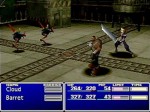 What it Was: A remake of what was arguable one of the biggest and most important video games ever released using the power of the Playstation 3.
What it Was: A remake of what was arguable one of the biggest and most important video games ever released using the power of the Playstation 3.
What happened:
Good news: The project hasn’t been canceled.
Bad News: It hasn’t been canceled because it never existed in the first place.
Let me explain. At E3 2005, a demo was shown of the Final Fantasy 7 opening scene running on Playstation 3 hardware. This, along with a collection of projects centered around Final Fantasy 7 (including the movie Advent Children and the game Crisis Core) lead people to speculate that a remake was in the works. However, Square-Enix all but confirmed that this wasn’t the case.
My Thoughts: With this year being the 15th anniversary of Final Fantasy 7’s U.S release, you’d think Square would do something to commemorate it. Alas, this isn’t the case.
While you’re watching sports and eating hot dogs, remember all our brave troops who gave their lives for this country. Also, remember all those would-be-great video games that have been condemned to development hell and eventually canceled. Your regular $20GOTW and Lost Classics will return later this week.


 PS3
PS3
 Famicom Dojo
Famicom Dojo KEEP PLAYING
KEEP PLAYING KEEP PLAYING: Rewind
KEEP PLAYING: Rewind Powet Toys
Powet Toys Powetcast
Powetcast Hitchhiker's Guide POWETcast
Hitchhiker's Guide POWETcast















Pingback: Canceled Volume 4: A Thanksgiving Maximum Letdown Special - POWET.TV: Games, Comics, TV, Movies, and Toys